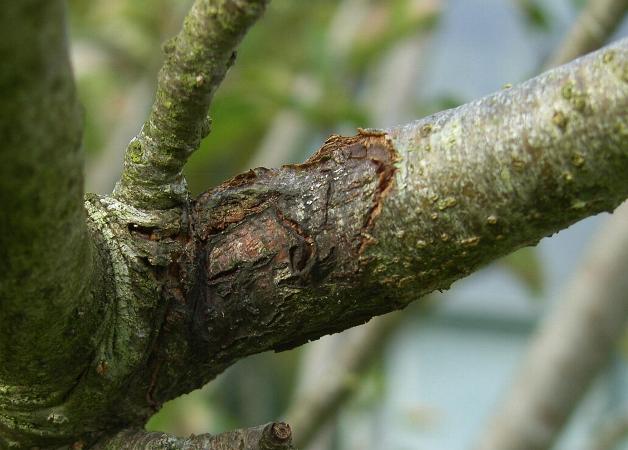A fungus which infects the branches of fruit trees causing sunken areas in the bark and these develop into distorted areas which may girdle the branch, eventually killing it. Any shoots which grow are weak, and may break in the wind.

Some of the older cultivars are more prone to this disease, Cox's Orange Pippin and Bramley's Seedling are particularly susceptible. Other trees such as ash, beech, poplar, hawthorne, sorbus and willow can be affected and provide a source for the disease.
Cutting out young affected shoots and trimming out cankers in older branches which have not been encircled yet with a chisel or knife may work - burn any removed material. Remove badly affected branches back to a healthy limb. This may leave a mis-shapen tree which can live on for quite a few years, but eventually most of it will have been pruned away or have died back. It may be prudent to uproot and destroy a young tree and start again, perhaps with a different more resistant cultivar.
Spray with Bordeaux Mixture at bud burst in spring and again in the autumn at leaf fall to kill the spores. Apply Medo wound paint after cutting out infected material
Back to article on Plant Diseases